Ideally, a new pair of shoes should be comfortable and fashionable. However, you may find a lot of options in footwear shops that meet these 2 criteria, but at the same time their quality is so bad that they won’t last long. We decided to find out what things you should pay attention to in order to choose a really high-quality pair.
Check the shoes for smudges and glue marks.
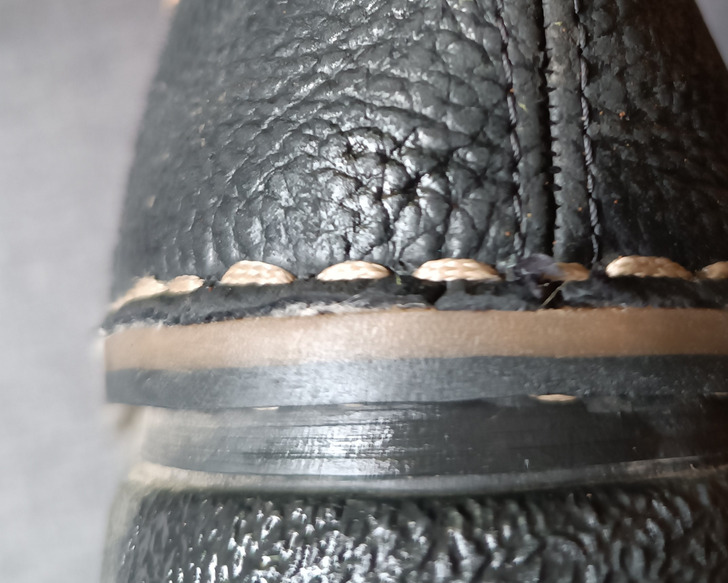
Manufacturers often use glue to stick together different parts of the shoe. If the glue is of high quality and the work is done properly, the pair will last a long time. However, small glue drips in the spots where parts meet or traces of glue on the surface indicate that you are looking at low-quality shoes and that there were issues during production.

When a part of the shoe, its sole or insole, comes off a bit, it means the shoemaker probably used bad or expired glue, and this pair will fall apart quickly.
Examine whether the pair is symmetrical.

Quality shoes in a pair should be symmetrical, and any differences between the right and left shoes most likely indicate a defect. To check this, you need to put the soles of both shoes together and see if they match in length and width.
It’s also worth putting the pair on the floor to understand whether the height and outline of the upper edge of the heel are symmetrical. If the soles are painted in different colors, check whether the paint is within the borders of the sole and whether the pattern matches. Gross irregularities in symmetry indicate that the manufacturer didn’t pay much attention to quality.
Check the seams carefully.
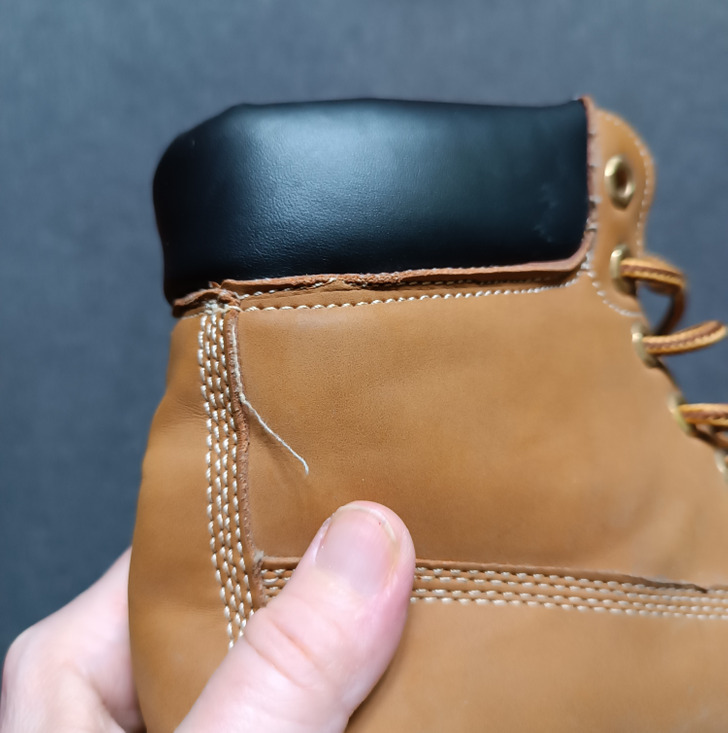
Any uneven or diverging seams make shoes look not that good. This happens if the manufacturer used too thin threads or the work was done poorly. As a result, such a pair will fall apart much faster. It’s also necessary to check the uniformity of stitches and the evenness of the seam itself.
If its line is curved or zigzag-looking, this means that the shoes you’re looking at are of poor quality and will lose their appearance in a couple of months. And zigzag-looking stitch is often used to hide the imperfections of the stitching.
Examine the heels.
The heel must be firmly attached to the sole and not wobble. It’s necessary to look at the shoes from the side. In good quality pumps, the high heels are positioned exactly under the center of the heel and touch the ground at a slight incline.
It’s worth looking carefully at the heels from behind – any deviation of the heels from the angle of 90⁰ indicates a defective product. Moreover, these shoes are simply dangerous to wear – this may lead to ankle injuries.
Loose eyelets are a bad sign.
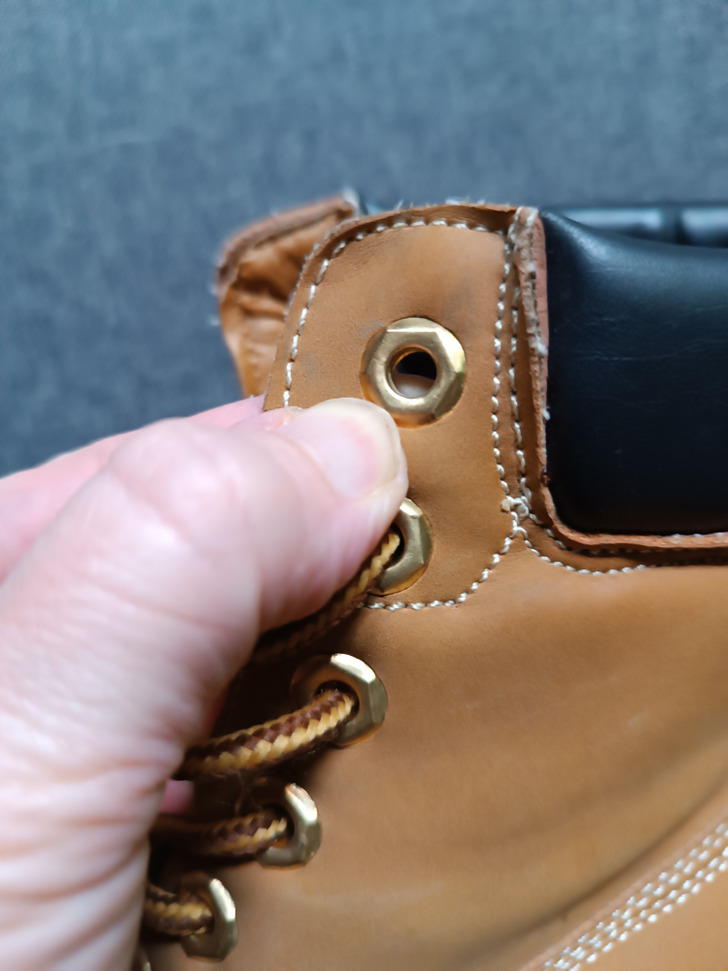
Any metal or plastic parts on the shoe (especially those that come into contact with the skin) should be tightly fastened. Thus, it’s worth carefully examining the eyelets for laces. Although this defect is quite rare, it can lead to wearer’s injury.
You should also check how well any embellishments are attached to the shoe. If they fall off at one point, the pair won’t look good anymore.
Carefully inspect the inside of the shoe.

Some manufacturers save on the training of workers and don’t calibrate equipment before the production of a new product line. As a result, shoes, boots and sneakers may have seemingly insignificant defects such as wrinkles and creases. If these defects are small, they won’t cause much trouble to the wearer. But large creases can rub the skin while walking, which will lead to abrasions and blisters on the feet.
Examine the insoles.
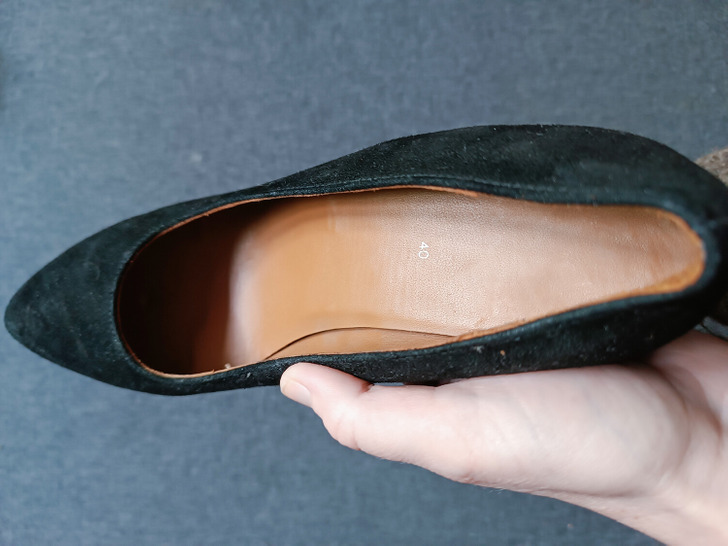
Even if a shoe looks perfect from the outside, you need to scrutinize it from the inside too. If the insoles show small wrinkles and creases, this pair is likely to be uncomfortable to wear. In addition, you should carefully feel the insoles to make sure that there are no bubbles on them.

Another important thing is that there must be cushioning between the insole and the sole, especially in the toe and heel area. Otherwise, a long walk in these shoes will make not only your feet and legs sore, but also your back.
Check how the shoes smell.

Low-quality and cheap shoes often have a strong chemical odor. It’s best to refrain from buying this pair. But if shoes or boots exude the scent of leather, polish or wood, you’ve found the shoes of high quality.
Take a photo of the shoes.

Of course, shoes made of synthetic materials can also be of high quality, especially when it comes to sports models. But good shoes should ideally be made of leather. They are softer and fit better on the foot, which means they will be much more comfortable to wear.

However, the quality of leather also varies. Often, manufacturers don’t mention the type of leather they use to make shoes in order to keep costs down. To determine the quality of the product you are holding in your hands, you need to take a photo of the shoes and enlarge the image. If you can see pores on the leather, you can safely buy the shoes.
Bend the shoe a little bit.

You don’t need to knead your shoes too much, but you can bend the shoe slightly to see how flexible the sole is and whether it remains attached to the upper part when moved. In addition, it’s worth pressing the sides of the shoe a little bit. Throughout the day, our feet usually increase in size a little, so a quality pair should adapt to these changes.
Check how your shoes sound.
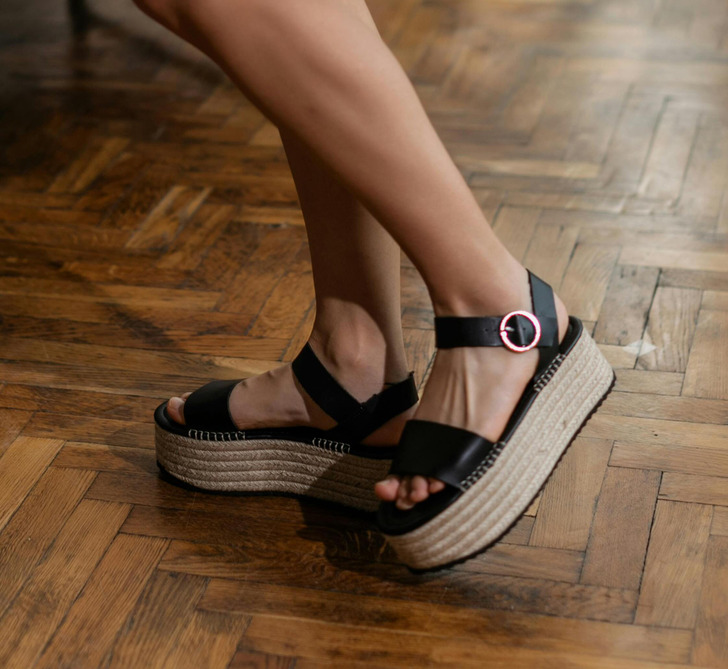
Most shoe shops have soft carpeting on the floor, so it’s a good idea to take a short walk on a harder surface before making a purchase. If the soles and heels make unpleasant clanking noises when you walk, you are likely to be wearing a low-quality pair. And platform or wedge shoes shouldn’t sound like there are voids inside the sole.
Examine the material of the sole and heel carefully.

Usually the sole of a really good quality pair is made of leather or good rubber. These shoes are comfortable to wear, and in addition, they almost don’t slip. At the same time, if the base of the sole is uneven, then these shoes will be uncomfortable.
In addition, it’s worth examining the material from which the heels are made. If the manufacturer used plastic or didn’t cover the heel with leather or fabric, then you are looking at a cheap product that is far from being perfect.
Rub the shoes with a cloth.
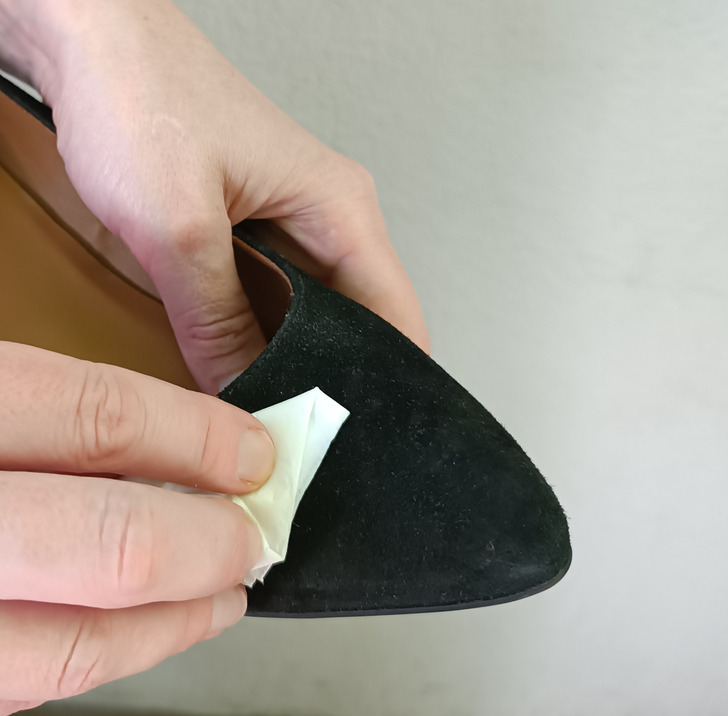
Sometimes manufacturers use poor quality leather dyes, which can leave marks on the skin or clothes. Therefore, before buying, you should carefully rub the shoes inside and outside, first with a dry cloth and then with a damp cloth. If there are no marks on the fabric, the shoes are okay.
And here’s a list of fashionable shoes that are not as cool as they look.
These Passports Are Now Prohibited in the U.S. Following Donald Trump’s New Gender Executive Order
Upon his return to the White House, Donald Trump promptly began reshaping federal policies. In just a matter of hours, numerous executive orders were signed, overturning crucial decisions made by the previous administration. One of these directives, particularly controversial, concerns gender recognition.

A novel decree enforces a rigid binary definition of gender across all federal documentation. Non-binary and transgender individuals now encounter limitations on passports, legal records, and other official paperwork. The swift execution of these changes has left many in a state of confusion, scrambling to comprehend the repercussions and explore legal remedies.
Aside from passports, the order carries broader implications, influencing legal documents, penitentiaries, and federal policies pertaining to gender identity. Advocacy groups are mobilizing, lawsuits are being prepared, and affected individuals are seeking out alternatives ardently. Grasping the full extent of these alterations is imperative for those directly impacted and anyone with a vested interest in the future of gender identity rights in the United States.
Alterations in the Executive Order
Trump’s executive order, titled “Defending Women From Gender Ideology Extremism and Restoring Biological Truth to the Federal Government,” enacts a sweeping rollback of gender identity recognition in federal records. This order enforces a strict sex definition based on biological characteristics at birth, effectively negating previous policies that acknowledged gender diversity.
During the Biden administration, Americans had the option to choose a non-binary X gender marker on their passports, aligning with a growing number of international practices. The first U.S. passport with an X marker was issued in October 2021, with officials hailing it as a step toward inclusivity. Jessica Stern, the former U.S. Special Envoy for LGBTQ+ Rights, remarked: “The addition of a third gender marker propels the U.S. toward ensuring that our administrative systems account for the diversity of gender identity, gender expression, and sex characteristics among U.S. citizens.”
Trump’s new order reverses this advancement, stipulating that all official documents must now only reflect male or female designations based on biological sex. Secretary of State Marco Rubio reinforced this shift in an internal memo, informing State Department employees: “The policy of the United States is that an individual’s sex is not changeable. Sex and not gender shall be used on passports and consular reports of birth abroad.”
Beyond documentation, the order significantly modifies policies related to incarceration. In the past, transgender women could be placed in women’s prisons under certain circumstances, but the new directive mandates that all federal prison housing assignments strictly adhere to biological sex.
This ruling has sparked safety concerns, as transgender advocacy groups argue that placing trans women in men’s prisons heightens the risk of violence and abuse. The executive order also curtails gender-affirming policies across other federal institutions, indicating that agencies which previously acknowledged gender identity in legal cases, healthcare records, and workplace protections may now revert to binary sex classifications.
Impact on Passports and Impacted Individuals
Trump’s executive order has resulted in an immediate suspension of all passport applications requesting an X gender marker, leaving countless non-binary, intersex, and gender-nonconforming individuals in legal uncertainty. This decision impacts future applicants and those requiring passport renewal or updates.
The X gender marker was introduced under the Biden administration as part of broader efforts to broaden recognition of gender diversity in federal documentation. The first U.S. passport with an X designation was issued in October 2021, marking a historic shift toward inclusivity. This decision aligned the U.S. with countries such as Canada, Germany, Australia, and New Zealand, which already offered non-binary gender options on official paperwork.
Jessica Stern, former U.S. Special Envoy for LGBTQ+ Rights, hailed the introduction of the X marker as “a momentous step,” stating, “The addition of a third gender marker propels the U.S. forward toward ensuring that our administrative systems account for the diversity of gender identity, gender expression, and sex characteristics among U.S. citizens.” Now, that progress has been eradicated.
In an internal memo obtained by The Guardian, Secretary of State Marco Rubio instructed State Department employees and stated: “Suspend any application requesting an X sex marker. Suspend any application where the applicant is seeking to change their sex marker.”
Individuals with pending passport applications and X-gender requests will no longer be processed. The State Department has not provided alternative solutions for those affected, creating uncertainty about how they will navigate travel, employment, or legal identification.
While existing X-marker passports remain valid, concerns have been raised. Firstly, no guidance has been given on whether X marker holders can renew their passports. Secondly, individuals traveling with X-marker passports could encounter heightened scrutiny at customs in countries that no longer recognize the designation. Lastly, U.S. citizens with an X passport but other legal documents (such as Social Security records or state-issued IDs) marked as male or female may encounter challenges with verification processes in federal and international systems.
Reactions and Legal Disputes
LG/BT/Q+ advocacy groups have denounced the executive order, denouncing it as a direct assault on the rights of transgender and non-binary individuals. President of GLAAD, Sarah Kate Ellis, condemned the decision and remarked, “Transgender people are already serving in the military with honor and keeping our country and military safer and stronger. They meet the same rigorous health and readiness standards and continue to do so. The Trump administration’s inaccurate statements and rhetoric targeting transgender people are not based on facts.”
Legal experts anticipate a surge of lawsuits contesting the constitutionality of the executive order. The American Civil Liberties Union (ACLU) has already indicated intentions to file an injunction, arguing that the order discriminates against a legally recognized group of individuals.
Legal challenges to the executive order are expected to revolve around multiple arguments. Advocates contend that the policy infringes upon the Equal Protection Clause by discriminating against non-binary individuals and compelling them to misrepresent their identity on official documents. Another crucial legal contention involves administrative law, with opponents asserting that the State Department lacks the authority to suspend X gender passports without proper legislative oversight retroactively. Furthermore, human rights organizations have raised alarms regarding potential violations of U.S. treaty obligations, emphasizing that this policy shift may undermine identity protections recognized by international law.
What to Do If Affected
Passports issued with an X gender marker remain valid for the time being, but individuals may encounter challenges when updating or renewing them down the line. It is critical to monitor passport expiration dates, as currently valid passports can still be utilized for travel until they expire.
Those eligible for renewal should contemplate doing so at the earliest opportunity to avoid possible limitations if the policy becomes stricter. Staying abreast of legal developments is also crucial, as multiple advocacy groups and legal organizations are actively contesting the executive order, and forthcoming court rulings could impact passport regulations.
Individuals who applied for an X gender marker passport before the executive order went into effect should first reach out to the U.S. State Department to check the status of their application. Many applications may have been placed on hold or rejected due to the policy modification. Seeking legal counsel can also be beneficial, as groups like the ACLU and Lambda Legal offer assistance and guidance for those affected by gender-related documentation policies.
Non-binary individuals traveling with an X-gender passport may face hurdles due to discrepancies in U.S. policy and international recognition. Some countries might refuse entry or question passport validity, emphasizing the need to consult the embassy of the destination country before making travel arrangements. Airlines and TSA may demand supplementary verification if passport details do not align with official policies. Carrying supporting documentation, such as a state-issued ID or previous passport records, can assist in mitigating potential challenges. While U.S. consulates provide limited aid in cases of refusal at borders or discrimination, consular officers must now adhere to updated federal documentation rules.
The Future of Gender Identity Documentation in the U.S.
Trump’s executive order has revamped federal gender documentation policies, eliminating the X gender marker choice for passports and reinforcing a binary definition of sex. These adjustments impact numerous non-binary Americans, sparking worries about legal recognition, travel rights, and broader civil liberties.
Legal disputes are underway, with advocacy groups and civil rights organizations contending that the order violates constitutional safeguards and anti-discrimination statutes. Court decisions in the forthcoming months may determine the fate of the policy. The introduction of the X gender marker by the Biden administration in 2021 was viewed as a significant stride toward inclusivity, and its abrupt reversal underscores the profound political schism over gender identity rights in the U.S.
Beyond legal skirmishes, the new policy instigates uncertainties concerning future federal documentation regulations. If successfully challenged, passport choices may be reinstated; however, if upheld, similar restrictions could extend to other government-issued identification.
Feel free to SHARE this article with your loved ones!




Leave a Reply